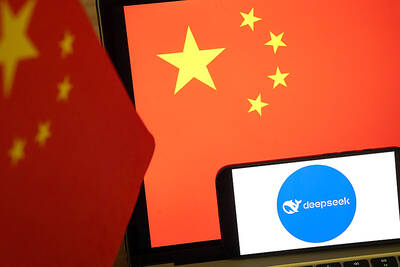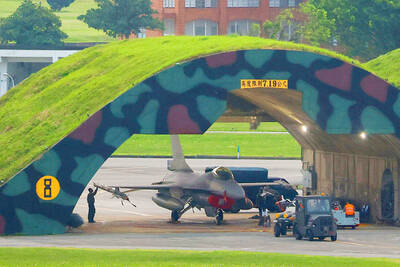The gash in a critical pipeline that saboteurs struck four days ago remained submerged in a vast lake of crude oil on Saturday, defying attempts at repairs that would get the oil moving again to tankers in the Persian Gulf.
In southern summer heat of 49?C, with great plumes of flames and smoke at refineries dotting the horizon of a parched and desolate plain, workers at times moved so slowly that they seemed to be mirages.
The pace frustrated American military and private engineers who were there to drain the lake so that repairs could proceed.
"It's just really a logistical nightmare to work here," said Michael Doherty of the Army Corps of Engineers, a resident engineer on an oil infrastructure restoration in the south, who had led a convoy of pumps, lights and cranes across nearly impassable roads.
"You don't have it, you can't go back for it," he said.
At the same time, suspicions grew here that the attack on this pipeline last Tuesday, and on another large pipeline the day before, were in effect inside jobs, explosions so carefully placed in the barely comprehensible web of Iraqi pipelines that only someone with expert knowledge could have directed the work. The attacks shut down exports from Iraq's southern oil fields, which are by far its most productive.
"They must have had help from someone who knew very well where the pipelines were, said a civil engineer with the Southern Oil Co who would not give his name.
Asked whether the help would have had to come from someone now active in the company, the engineer said, "Perhaps."
The engineer said that repairs on the second sabotaged pipeline were more advanced, with 90 percent of the work completed. He said that it could begin carrying oil within a few days.
The daylong ordeal produced little more than plans to begin pumping the lakes the next day, and it underscored the dilapidated state of Iraq's oil infrastructure.
One reason the strikes were able to shut down the system is that valves in the pipelines, meant to isolate breaches, are broken down, ineffective or missing.
"I think it's probably normal in Iraq because the designed systems weren't very good," said Lyle Nelson, a Halliburton engineer who arrived late in the day to lend advice on the pumping project.
The day began at an Army Corps base near the Basra Airport -- the large city of Basra is less than 6.6km away -- where there are loads of equipment for the operation and sport utility vehicles with engineers and managers.
The convoy took until just after noon to get started, and then it encountered the jouncing, potholed back roads leading to the breach.
Around 1:15pm the convoy arrived at the breach. About 35 Iraqi workers were laboring slowly in the heat, many wearing blue jumpers with SOC in white on the back -- for Southern Oil Co.
By 2 pm, an earth mover had begun pushing dirt across the canal of oil to form a dam.
The idea was to isolate the breach, then plug the pipeline with inflatable balloons called stopples. But word soon came over a radio that no stopples for pipelines this large could be found in Iraq or in the region on short notice.
The dam took about an hour to finish, and Iraqi workers gradually sucked oil from one pit that looked like a swimming hole.
The pipeline -- but not the broken section -- was exposed below, as oil seeped out of the surrounding soil and again accumulated in the bottom of the pit.
As the work slowed even further, two SOC workers debated whether this pipeline had been sabotaged or simply ruptured because it was so old and corroded.
One of the workers, named Adnan, appeared to win the debate by pointing out that a motorcycle battery used to set off the charge had been found nearby.
A local engineer said that the saboteurs had dug a hole and set the charges -- the pipeline is buried about 2m below the surface.
"And we find pieces of clay and mud as if thrown out," Adnan said, explaining one result of the blast.
The Iraqi and Army Corps engineers were awaiting the arrival of the experts from Halliburton when the radio cracked.
"We're not good shape here," someone said on the other end. "We're stuck."
A KBR engineer, standing in the dizzying fumes generated by evaporation of the oil, swore. The Halliburton engineers finally arrived, but then the dispute over safety broke out. A spark, the American engineers said, could create a huge fireball.
As the Iraqis sullenly pulled their equipment back after 6pm, the workday ended.
It was not safe to drive in this area in the dark, Doherty said, so it was time to go.

MISINFORMATION: The generated content tends to adopt China’s official stance, such as ‘Taiwan is currently governed by the Chinese central government,’ the NSB said Five China-developed artificial intelligence (AI) language models exhibit cybersecurity risks and content biases, an inspection conducted by the National Security Bureau (NSB) showed. The five AI tools are: DeepSeek, Doubao (豆包), Yiyan (文心一言), Tongyi (通義千問) and Yuanbao (騰訊元寶), the bureau said, advising people to remain vigilant to protect personal data privacy and corporate business secrets. The NSB said it, in accordance with the National Intelligence Services Act (國家情報工作法), has reviewed international cybersecurity reports and intelligence, and coordinated with the Ministry of Justice Investigation Bureau and the National Police Agency’s Criminal Investigation Bureau to conduct an inspection of China-made AI language

BOOST IN CONFIDENCE: The sale sends a clear message of support for Taiwan and dispels rumors that US President Donald Trump ‘sold out’ the nation, an expert said The US government on Thursday announced a possible sale to Taiwan of fighter jet parts, which was estimated to cost about US$330 million, in a move that an expert said “sends a clear message of support for Taiwan” amid fears that Washington might be wavering in its attitude toward Taipei. It was the first announcement of an arms sale to Taiwan since US President Donald Trump returned to the White House earlier this year. The proposed package includes non-standard components, spare and repair parts, consumables and accessories, as well repair and return support for the F-16, C-130 and Indigenous Defense Fighter aircraft,

CHECKING BOUNDARIES: China wants to disrupt solidarity among democracies and test their red lines, but it is instead pushing nations to become more united, an expert said The US Department of State on Friday expressed deep concern over a Chinese public security agency’s investigation into Legislator Puma Shen (沈伯洋) for “secession.” “China’s actions threaten free speech and erode norms that have underpinned the cross-strait ‘status quo’ for decades,” a US Department of State spokesperson said. The Chongqing Municipal Public Security Bureau late last month listed Shen as “wanted” and launched an investigation into alleged “secession-related” criminal activities, including his founding of the Kuma Academy, a civil defense organization that prepares people for an invasion by China. The spokesperson said that the US was “deeply concerned” about the bureau investigating Shen

‘TROUBLEMAKER’: Most countries believe that it is China — rather than Taiwan — that is undermining regional peace and stability with its coercive tactics, the president said China should restrain itself and refrain from being a troublemaker that sabotages peace and stability in the Indo-Pacific region, President William Lai (賴清德) said yesterday. Lai made the remarks after China Coast Guard vessels sailed into disputed waters off the Senkaku Islands — known as the Diaoyutai Islands (釣魚台) in Taiwan — following a remark Japanese Prime Minister Sanae Takaichi made regarding Taiwan. Takaichi during a parliamentary session on Nov. 7 said that a “Taiwan contingency” involving a Chinese naval blockade could qualify as a “survival-threatening situation” for Japan, and trigger Tokyo’s deployment of its military for defense. Asked about the escalating tensions